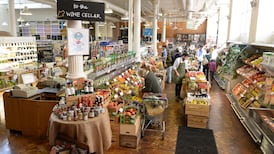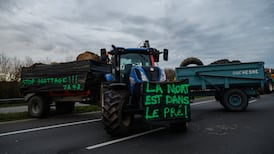Last week Bord Bia launched something called the Sustainable Dairy Assurance Scheme. By 2016 Bord Bia wants every diary farm in Ireland signed up to the scheme, which is the first of its type anywhere in the world. It is "a rigorous, independently verified and internationally accredited programme that not only sets out the requirements for best practice in Irish dairy farms but provides a means of measuring and improving the performance of every participating farmer".
The reference to world first is perhaps the first clue there might be more to this than meets the eye. It raises two questions. The first is what does sustainability mean in the context of an Irish dairy farm? The second is does any one actually care?
Credibility problem
The answer to the first question would appear to be that sustainable dairy farming is whatever Bord Bia says it is. According to its press release, "independent accreditation is a process whereby an independent body, in this case the Irish National Accreditation Board (INAB), examines the scheme and compares it with other international schemes. When INAB considers a scheme to be as good, or better, than the international standards, it awards accreditation." But given that it is the first scheme of its type you start to see the credibility problem.
The answer to the second question is also contained in the press release. It quotes Bord Bia chairman Michael Carey as saying: "The majority of leading multinational customers (including Unilever, Nestlé, Danone and Kraft) have set out long term-targets to enhance the sustainability of their supply chain."
Putting two and two together it appears that big food companies want to tell their customers that their products are green and Bord Bia has dreamt up this scheme to help them do so. All else being equal it should help Irish milk producers sell more milk and milk products after the ending of quota restrictions on 2015.
Clever old Bord Bia, you might be tempted to think.
And indeed there is no problem if you are a diary farmer or a milk processor. But most of us are neither. We are consumers of milk and milk products and this scheme could result in us paying more for little reason.
Leaving aside the fact that the whole thing – like most sustainability schemes – is built on rather challenging scientific foundations, the scheme appears to be another barrier to the sale of Northern Irish milk in the South.
One of the more curious things about the new scheme is that, unlike the various other Bord Bia quality schemes for beef and lamb, this is a 26-county scheme. Northern farmers are excluded, according to Bord Bia. The reason apparently being because Bord Bia is a State agency, which seems a bit puzzling given that its meat schemes operate on an all-island basis.
One consequence of this is that it will give Southern milk producers another way of differentiating their branded milk products from cheaper Northern milk. The availability of cheap milk of identical quality from Northern Ireland has been the driving force behind own-label milk in the South which retails at about half the price of branded milk. It has provided the big multiples with a source of low-cost milk that has in turn given them the power to force the Southern milk processors to provide them with cheap own-label milk sourced in the South.
The industry has responded with the National Diary Council guarantee mark which allows them differentiate southern milk from northern milk. It can make no assertion as to quality, only geographic origin, although superiority is heavily implied in the accompanying advertising campaigns. But ultimately the notion that people who live in the South have some patriotic duty to pay twice the price for milk is nonsense and it will not work.
This new scheme adds another string to the bow of southern milk producers in their battle to keep out northern milk. And this one has science, independent accreditation and a €3.5 million Government-funded campaign behind it.












